Sustainability
Ensuring a healthy balance with our natural landscape
“Since I started using organic and biodynamic practices, I am seeing the benefits in greater expression of aromas and textures in the wines from all our vineyards.” – Prue Henschke
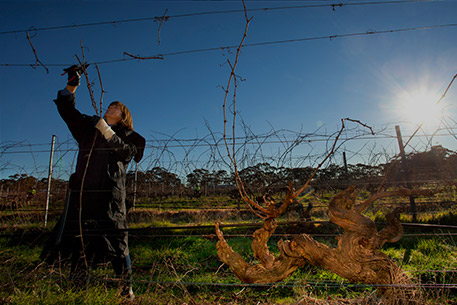
There are many facets of day-to-day practices contributing to their success with none more important than Prue’s organic/biodynamic farming practices. They diligently follow the lunar calendar making their organic preparations for composting and sprays. They also add mulch under vines and plant native plants to attract beneficial insects that attack pests. It has become the mantra of almost every winemaker on earth, ‘Wine is made in the vineyard’. The Henschkes, past and present, don’t just say it, they live it…
Henschke has been awarded with many accolades over the years for excellence in environmental management and innovation:
ENVIRONMENTAL ACCOLADES
2023 Certified member of Sustainable Winegrowing Australia
2022 (SAWIA) Environmental Excellence Award – Small/Medium Winery Category
2021 Robert Parker Green Emblem for Outstanding Efforts in Sustainable Wine Production
2020 International Sustainable Winegrowing Award – Gold Medal Winner
2016 Australian Packaging Covenant High Performer Award
2015 SA Region Awards – Premium Food and Wine from our Clean Environment
2015 Australian Packaging Covenant High Performer Award
2012 SA Wine Industry Association Inaugural Environmental Excellence Award
2010 Advantage SA Barossa Regional Awards Sustainability Award
Prue’s Philosophy
Nourishing our land means to connect between healthy soils and healthy people
“As the current custodian of the Henschke vineyards in the red gum-studded rolling hills of Eden Valley and the wet, steep slopes of Lenswood in the Adelaide Hills, my days are divided between various ‘gardens’. In the oldest garden; the Hill of Grace vineyard, the vines are over 160 years old, among the oldest in the world.
The gardens include 109ha of vineyards, 32ha of native timber trees and 150ha of bushland under conservation.
My philosophy is a holistic one – to ensure our created environment sits in a healthy balance with our natural landscape. I would like to see the next generation inherit a fertile and sustainable land.
The Henschke vineyards are managed using organic and biodynamic practices. This includes using compost covered with straw mulch, bicarbonate sprays and soil preparations such as cow-pit peat made from cow manure. It is broken down into a rich soil medium that is oxygenated in flowing water and sprayed over the vineyard land four to five times through spring. A preparation, known as 501 and made from finely crushed quartz crystals (silicon dioxide) buried in cow horns, is mixed with water and misted over the vines. The silica crystals reflect more light into the canopy and stimulate photosynthesis.
Our vineyards have a permanent sward that includes native grasses, such as Wallaby grass (Rytidosperma spp.). It is active in winter but goes into dormancy in late spring and summer when the vines start flowering, minimising the competition for water. The spring-time flowering bush, Sweet Bursaria, is planted at the ends of the vineyard rows to help with pest control – it attracts native wasps that prey on the Light Brown Apple Moth caterpillars.
As a member of the wine industry’s environmental code, Sustainable Winegrowing Australia, we utilise its national program as an Environmental Management System and Environmental Action Plan. Henschke is committed to meeting the requirements of the Sustainable Winegrowing Australia program to ensure we safeguard the natural environment in which our business operates. Our Environmental Action Plan is reviewed annually to guide this process.
In June 2021 we were awarded a Robert Parker Wine Advocate Green Emblem, which recognises 24 wineries from around the world that have demonstrated extraordinary efforts in the pursuit of environmentally friendly practices. To qualify for this award, a producer may or may not already be organic and/or biodynamic certified, however needs to be an outstanding proponent of sustainability who looks towards long-term environmental protection and biodiversity. The Robert Parker Green Emblem is given on rare and exceptional merit and we are proud to be a recipient in this inaugural list.
Viticulture Management
Canopy Management
In the late 1970s Dr Richard Smart was developing theories about the role of the canopy on the colour and quality of red grapes. Those theories, Prue believed, could well be applied to the Henschke vineyards. While they were already producing high quality red wines, she believed they could do better. Initially they looked at establishing better trellis systems, which in turn led to experimenting with a cooler climate and the subsequent purchase of the property at Lenswood. There, Prue believed less stressful photosynthesis during summer would allow flavour compounds to develop. This turned out to be right and had a great effect on the increased quality of the Henschke Lenswood wines.
Soil Management
A number of key issues must be considered in relation to soil management, such as soil structure, moisture holding capacity, and nutrient availability. There is also a need to consider such things as how to maintain good soil porosity, the bacterial activity in the soil that leads to fertility, and the effects of pH. The water holding capacity of a soil is important in dry-grown vineyards and is improved by increased organic matter and mulching. Thirty-six percent of Henschke vineyards are dry grown and the soil management techniques utilised lead to the production of high quality fruit.
Many different techniques of soil management exist. Henschke has moved completely away from mechanical disturbance and now uses permanent sward. Mulching with wheat straw to avoid herbicide treatment under the vine is used in most of the vineyards, and allows more organic matter to be incorporated into the soil and preserves soil moisture. Earthworms also open up the soil and introduce nutrients and soil ameliorants, such as lime. Mulching helps to maintain the fertility of the soil without the addition of nitrogen fertilisers, which often favour the development of disease, especially botrytis. A good balance of nutrients in the top 60-70 centimetres of soil is important for the production of premium grapes. The Henschke vineyards are managed using organic and biodynamic practices; incorporating biodynamic compost made from all the winery by-products, such as grape marc, stalks and waste water, cow pit peat and 500 and 501 preparations.
The Effect of Old Vines
Australia’s oldest vineyards, dating back to the mid-1800s, carry an aura of wonder about them and the gnarled and free-form shapes are rarely seen in other plant species of such age. For international guests visiting these vineyards, it is a viticultural mecca.
Soon after the establishment of the Australian vineyards, phylloxera was introduced to France where it slowly wiped out most of the vineyards and beyond into Germany and Italy. Rootlings brought into Australia from the French nursery Richter led to a similar plight in the Victorian vineyards. Sand, however is phylloxera’s enemy as it does not allow the formation of soil cracks or damp ‘super-highways’ between the root systems that these sap-sucking insects love. This is why vineyards such as Tahbilk’s small 1860 shiraz vineyard can still exist and why, for slightly different reasons, the Vieilles Vignes of Bollinger survived the much later devastation by phylloxera in the Ay and Bouzy regions of Champagne.
Hugh Johnson makes a tiny but fascinating reference to the pre-phylloxera vines, the ‘Survivors of the Plague’ in his latest book, The Story of Wine. He mentions that wines made from these vines “have a certain quality and depth of flavour that sets them apart…the view of Bollinger’s president is that champagne from ungrafted vines (which produce small quantities of highly concentrated juice) is too ‘fat’ for modern tastes!” Undoubtedly this ‘fatness’ is the part of the texture – the extract or intensity of flavour on the palate – that we identify in Australian red wines from the century-old vines.
South Australia has had very different infestations affecting the survival of its old vineyards.
Firstly, the fungal disease, eutypa, which is spread through large pruning wounds, causes dieback in the arms of older vines and the vine slowly rots away and becomes unproductive.
The second limiting factor is related to economic pressures forcing growers to pull out ageing vines. These low-yielding vineyards are being replaced with a more efficient trellis design particularly suited to mechanisation and better irrigation systems. The quality rating of these new vineyards depends on the vine balance, which is something many old vineyards have realised over the years. They adjust to the nature of the not-so-benevolent rainfall during the growing season and to the natural nutrient status of the soils.
The third factor is one we hope we will not have to witness again – the mid-1980s vine-pull scheme – where growers were paid to rip out their vines. This mostly involved ancient vineyards that had developed a harmonious relationship with nature, but not with a winery purchase price.
One feature links these old centenarians – low vigour. It is a very important feature brought on by a multiplicity of factors:
• shallow soil depth
• low level of soil nutrients
• trellis style
• cultural techniques, possibly with inadvertent root pruning
• low summer rainfall (non-irrigated)
As a consequence of low vigour comes low bud numbers and open canopies, low yields and often smaller berry size. With the lower yields comes earlier ripening and full maturity – particularly important in cooler years – and a development of extract or intensity of flavour on the palate.
Their root systems are formed in the first 10 years and from then on, the roots die and re-grow using the starch reserves built up in early winter for new growth in spring. It can almost be guaranteed that within a 10-year period extremes of drought and floods will be experienced, and the root systems will develop accordingly. The wood development appears to reach its maximum circumference at around 30-40 years. After this the live wood dies off. The oldest vines have very little live tissue. Of a 20-centimetre diameter, about a quarter will still be alive. Practices such as machine harvesting, which requires flexibility in the vine trunk, are out of contention.
The cultural techniques are similar between these vineyards. They are trained either as bush vines or on a low single or two-wire trellis and left to survive as best they can through dry summers with minimal weed and irrigation management.
Research into the difference between wines from young vines and wines from old vines allows one to appraise the differences in complexity and texture. Complexity is derived from the various combinations of primary fruit flavours – developed fruit flavours and flavours contributed through the winemaking and barrel-ageing. One should look at the wines analytically to distinguish the components of complexity. Flavour descriptors are useful in looking at the fruit characters, which are split into primary fruit characters.

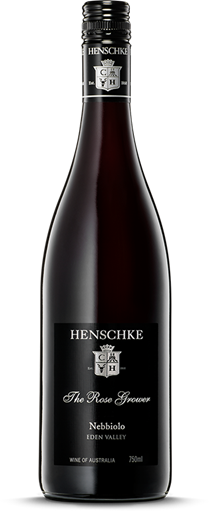


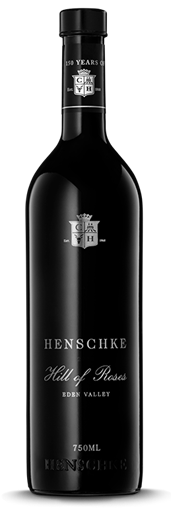
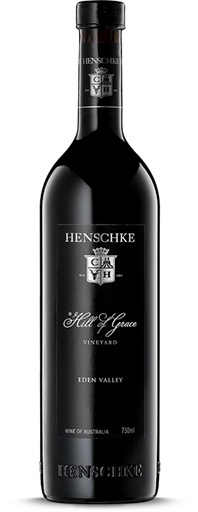
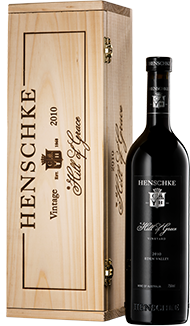 Henschke is committed to Quality, Health & Safety and the Environment.
Henschke is committed to Quality, Health & Safety and the Environment.